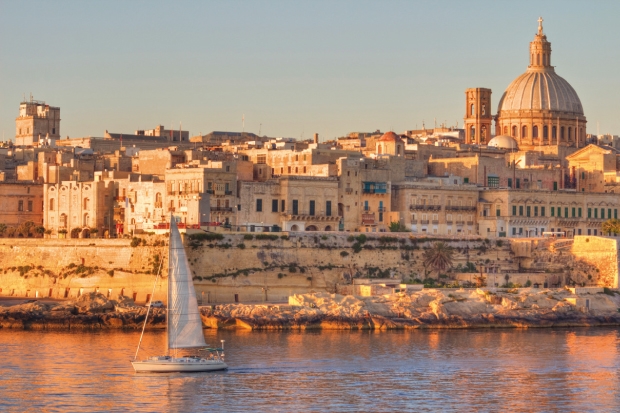Fate occasionally leads travellers to places they had never planned to visit. Into this category, for me, fell Malta. I went to Valletta to see my sister, who was at a nursing conference. I wasn’t expecting a wild party; the island has a reputation for being fairly dry compared with its Mediterranean sisters. Yet for a certain type of traveller, with sturdy shoes and an interest in military history, Malta is a matchless trove. I plotted my campaign around the island’s key martial landmarks carefully. Time spent on reconnaissance is seldom wasted. My sister, inexplicably, made her excuses.
Valletta is still dominated by reminders of the Knights Hospitaller, the crusading order that relocated there after being booted out of the Holy Land by the Ottoman Turks. The Knights made modern Valletta, but they had a lot to work with; the harbour is one of the world’s great natural fortifiable seaports, hilly, rugged and with numerous inlets. Alongside the crusader forts, I discovered baroque churches, paintings by Caravaggio and the former Hospitaller and Royal Navy hospitals. Malta was a Royal Navy base for many years, and plenty of naval families have fond memories of the island, including, apparently, the Queen and Prince Philip.
A short bus trip inland, and I arrived at the fortified city of Mdina, with a Carmelite monastery open to the public. When I asked the girl at the ticket office why only a few monks remain, she replied: ‘Too boring.’ For her, perhaps. Tucked discreetly into the walls of Mdina is the Xara Hotel, a favourite of the Pitt/Jolies. Is Brad a fellow military history enthusiast? He spent part of his honeymoon at the Bovington Tank Museum, after all.
The Maltese archipelago’s strategic location in the Mediterranean has made it highly desirable as a maritime base, and many a battle has been fought over the island. Two stand out. The first is the Great Siege of 1565, when Jean de Valette and several thousand Hospitaller knights held out for over four months against thousands of Turks. The forts of St Angelo and St Elmo provide excellent vantage points from which to imagine this conflict. During the second world war, Malta was subjected to an even more destructive siege by German and Italian bombers. Buried under Valletta’s Upper Barracca gardens is the recently opened Lascaris War Rooms, the command centre used by the British to control RAF, army and navy operations using Enigma information received from Bletchley Park. Malta just kept giving.
The crusaders died off, of course, so what happened to the Knights of Malta? They survive, in spirit anyway, in a less militaristic form, with modern objectives supporting medical aid and charity. The inheritors of the Knights Hospitaller tradition are known as the Sovereign Military Order of Malta, a strange supra-national body with headquarters in Rome and an outpost in Valletta’s Fort St Angelo. There are all sorts of membership levels, but it’s hardly egalitarian: participation is by ‘invitation only’ and ‘solicitations are not entertained’. If you are invited, robes and regalia await, so plenty of opportunities for dressing up. I have yet to be asked. I won’t hold this against Malta; the battle-scarred island brought me much unexpected joy.






Comments